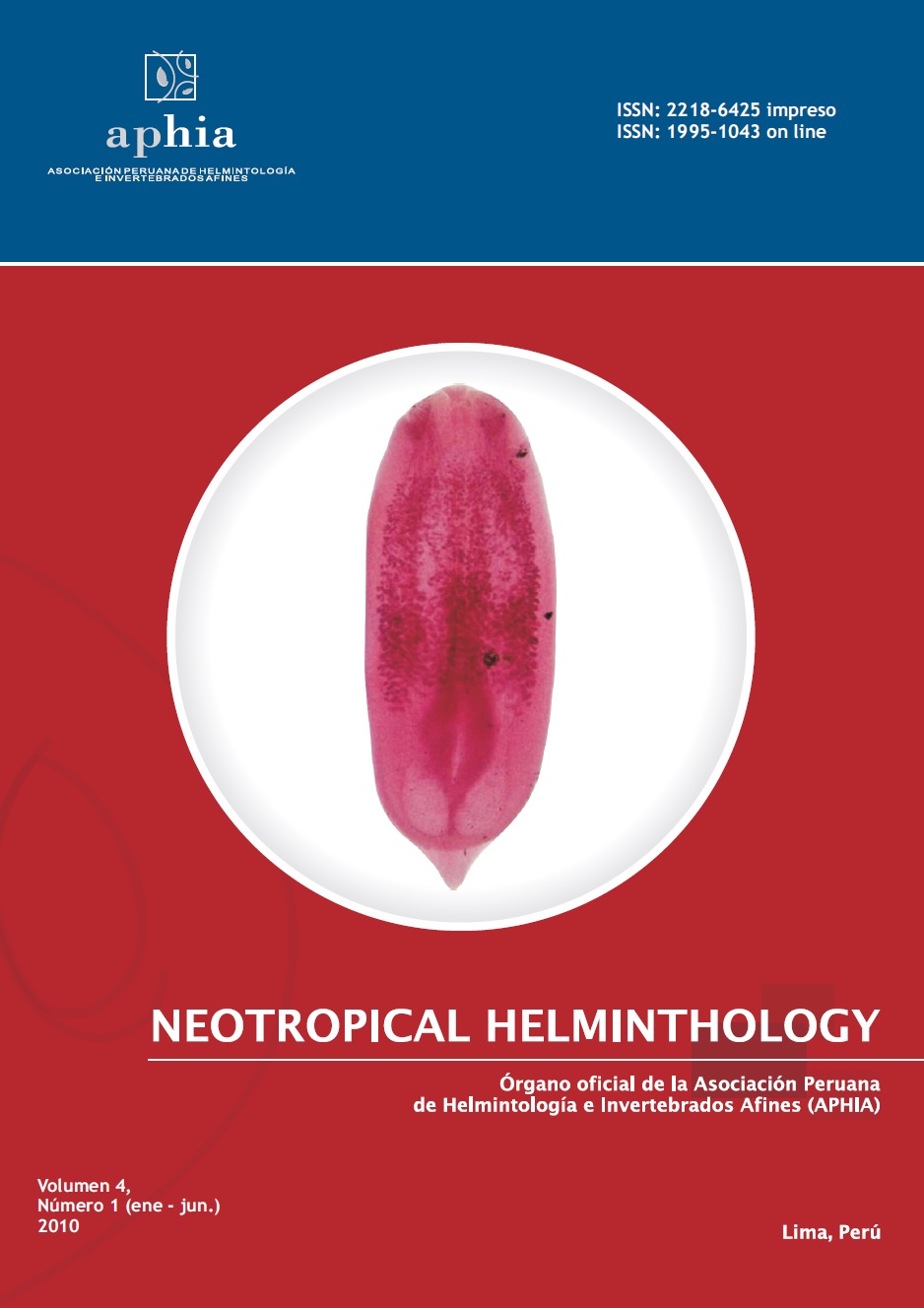CHRONIC PARASITIC SECRETORY SYNDROME BY STRONGYLUS VULGARIS WITH RESISTANCE TO IVERMECTIN IN A RACE THOROUGHBRED EQUINE
DOI:
https://doi.org/10.24039/rnh2010411092Keywords:
cysts, enteritis chronic, equine, Strongylus, Strongylus vulgarisAbstract
A thoroughbred race horses, of 2 years old and male was remited. With history of severe emaciation, rough hair and sporadic chronic diarrhea. Previous stool examinations showed HPG 1850 (eggs per g of feces) of Strongylus spp. The employee was treated with Ivermectin 0.2 mg. kg-1 single dose orally. Necropsy was performed and tissue samples were taken for histopathological study, the same as those processed by conventional methods. Additionally, intestinal contents were sampled for parasitological studies. Macroscopic findings were severe emaciation, rough hair and pale mucous membranes. It was noticed gastric ulcer syndrome, hemorrhagic enteritis in the small intestine with chronic focal presence of parasitic forms of 3-5 cm and type cysts, and hemomelasma ilei. The histological sections showed proliferative enteritis by a lymphocytic infiltrate and few eosinophils. Parasitic cysts were observed in the secretory portion (lamina propria). The study showed stool 1050 HPG of Strongylus spp. Parasitic forms were observed and identified as Strongylus vulgaris (Looss, 1990). In conclusion necropsy findings showed a severe parasitic disease syndrome associated with chronic infestation by Strongylus
Downloads
Published
How to Cite
Issue
Section
License

This work is licensed under a Creative Commons Attribution-NonCommercial-NoDerivatives 4.0 International License.
OBJETO: El AUTOR-CEDENTE transfiere de manera TOTAL Y SIN LIMITACIÓN alguna al CESIONARIO los derechos patrimoniales que le corresponden sobre la (s) obra(s) tituladas: xxxxxxxxxxxxxxxx, por el tiempo que establezca la ley internacional. En virtud de lo anterior, se entiende que el CESIONARIO adquiere el derecho de reproducción en todas sus modalidades, incluso para inclusión audiovisual; el derecho de transformación o adaptación, comunicación pública, traducción, distribución y, en general, cualquier tipo de explotación que de las obras se pueda realizar por cualquier medio conocido o por conocer en el territorio nacional o internacional.
REMUNERACIÓN: La cesión de los derechos patrimoniales de autor que mediante este contrato se hace será a título gratuito.
CONDICIONES Y LEGITIMIDAD DE LOS DERECHOS: El AUTOR-CEDENTE garantiza que es propietario integral de los derechos de explotación de la(s) obra(s) y en consecuencia garantiza que puede contratar y transferir los derechos aquí cedidos sin ningún tipo de limitación por no tener ningún tipo de gravamen, limitación o disposición. En todo caso, responderá por cualquier reclamo que en materia de derecho de autor se pueda presentar, exonerando de cualquier responsabilidad al CESIONARIO.
LICENCIA DE ACCESO ABIERTO: El AUTOR-CEDENTE autoriza que manuscrito publicado en La Revista Neotropical Helminthology permanece disponible para su consulta pública en el sitio web https://www.neotropicalhelminthology.com/ y en los diferentes sistemas de indexación y bases de datos en las que la revista tiene visibilidad, bajo la licencia Creative Commons, en la modalidad Reconocimiento-No comercial- Sin Trabajos derivados –aprobada en Perú, y por lo tanto son de acceso abierto. De ahí que los autores dan, sin derecho a retribución económica, a la Asociación Peruana de Helmintología e Invertebrados Afines (APHIA), los derechos de autor para la edición y reproducción a través de diferentes medios de difusión.


 Numero 2 Volumen 19 - 2025 (versión Anticipada)
Numero 2 Volumen 19 - 2025 (versión Anticipada)














































